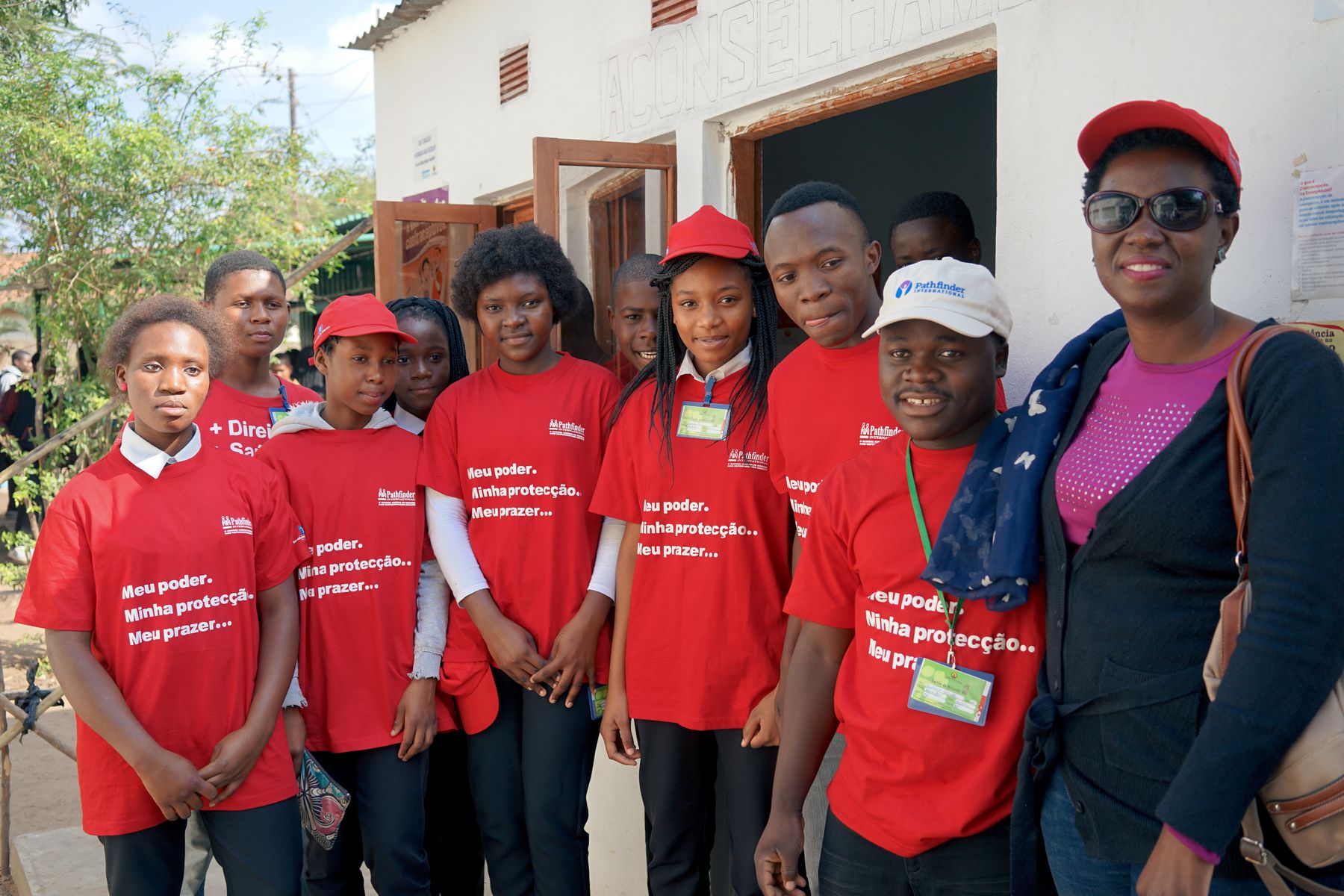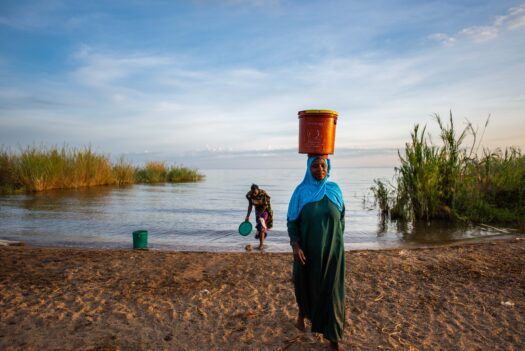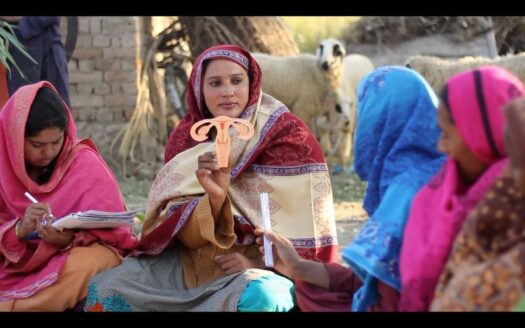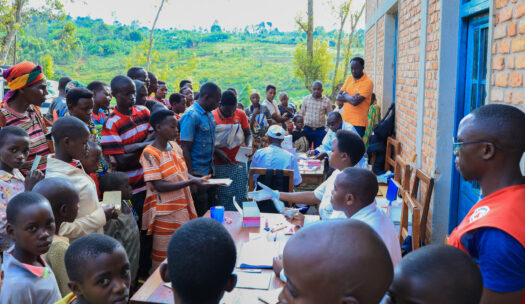Q & A with Rebecca Herman, Senior Technical Advisor, CPM, MPH
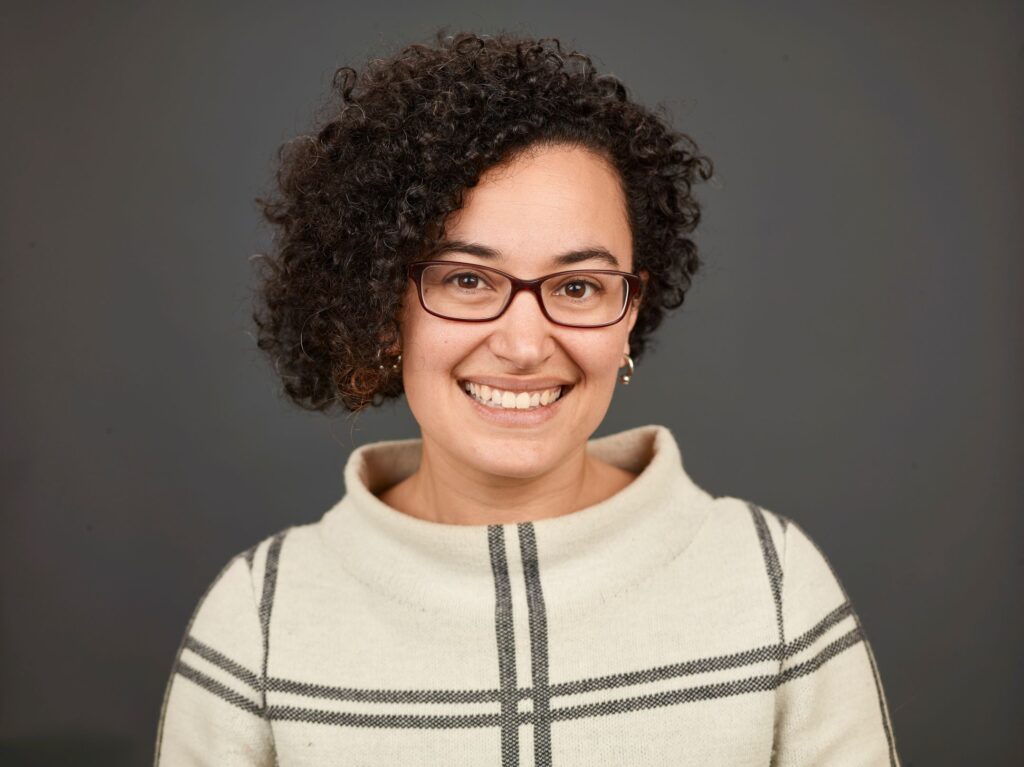
At the onset of the COVID-19 pandemic, Pathfinder knew we would need to put immediate plans in place to protect women and girls. Past pandemics and evidence from the early months of the COVID-19 outbreak showed us that women and girls were experiencing disproportionate secondary impacts – including a rise in gender-based violence (GBV) .
This year, as part of the global “16 Days of Activism against Gender-Based Violence” campaign, Pathfinder’s Rebecca Herman shares the progress we’ve made in addressing GBV during the pandemic and our growing efforts to integrate knowledge about GBV into our programs worldwide.
Q: Do you think campaigns like this have real world impacts? What difference do they make?
A: I have always been really fascinated by this campaign. It has a lot of history and traction in virtually every country, except the US! Historically, the 16 Days against GBV are really important to Pathfinder – almost every country takes action. Staff participate in service days and work on advocacy events with local governments.
The value of campaigns, particularly for issues where there is stigma and secrecy, is that they are an opportunity to discuss something that often isn’t. GBV is often secret. It’s private. It’s very hard to get good data, and we don’t know the true numbers. People are reluctant to report. If GBV is happening in a home, you might never hear about it. A woman could even go to a GBV provider that’s deeply committed to ‘non-household GBV’– but might say that this type of violence in a home is a ‘family matter.’
So to have something like the 16 Days Campaign, where it is acceptable to talk about GBV, to have news articles and politicians discuss it, it definitely makes a difference. The importance of breaking down the stigma, bringing it out of the shadows – it matters, and the 16 Days Campaign helps bring this about.”
Q: At the onset of the COVID-19 pandemic, what were Pathfinder’s first moves to ensure we protected women and girls?
A: There are really two main threads that I’ve seen in our projects to date. First, we recognized that with greater isolation of individuals, and women and girls in particular, came an increased need for integration of GBV awareness and response within our programs. COVID-19 has exacerbated, and highlighted, pre-existing realities. It certainly did this in terms of illustrating the pervasiveness of GBV, and the fact that many health systems were already strained. These aren’t new challenges; COVID-19 has simply made them worse and more obvious.
Integration is an important evolution that’s taking place right now in our field. The need to break down the siloes between sexual and reproductive health and GBV is evolving in the global health sector. For us, at the onset of the COVID-19 pandemic, we worked early on with our sexual and reproductive health providers to do first-line response. These aren’t providers that specialize in GBV – but we worked to give them basic skills. Right away, we put together ‘do no harm’ principles for every project. These principles, which recognized the escalated risk and prevalence of GBV, provided Pathfinder programs with guidance for supporting providers to respond to disclosures of GBV and refer clients for needed services and support.
The sexual and reproductive health sector has a critical role to play in mitigating GBV. If we think women should have antenatal appointments, use contraception…. but we aren’t thinking about the violence they face every day…we are missing a massive piece of the puzzle.
Rebecca Herman, Senior Technical Advisor, CPM, MPH
The second part of our approach involved supporting sexual and reproductive health providers to create safe environments and opportunities for disclosure so women who are experiencing GBV are more likely to report it and ask for support. In our programs in Pakistan, Bangladesh, Burundi, Democratic Republic of the Congo, Nigeria, and Mozambique, we rapidly integrated more thorough GBV awareness measures. In Pakistan, for example, our Naya Qadam program put together a full virtual GBV training manual, delivered over WhatsApp, with a Q & A portion.
It *is* important to note that we don’t push for universal screening. Universal screening is when you ask every client directly and explicitly if they are experiencing violence. But in places where appropriate help might not be available, that’s not a best practice. Universal screening only works if you can guarantee an appropriate response to disclosure, like getting someone the help and services they need, without exacerbating the risks they face. Pathfinder has been working to improve case-identification skills among sexual and reproductive health providers and building capacity for first-line response if a client does disclose her experience or fear of violence.
In the context of COVID-19, governments around the world have been seeing increased rates of GBV. Many of the governments with which Pathfinder works asked us what we could do and were interested in universal screening. Our programs have been helping stakeholders understand the complexity of safe response. We created a decision tree – a flow chart that illustrates and provides guidance on whether or not proceed with universal screening based on local and national health system context.
Q: So what are the next steps, both as the pandemic evolves, and to better address GBV in the long-term?
A: Right now, Pathfinder is focused on developing evidence-based tools and guidance to develop GBV-responsive family planning services. In simple terms, right now, Pathfinder does a lot of work teaching health providers to do thorough contraception counseling, and help their clients select the best family planning method for themselves and their life goals and realities. Part of that is medical: Do you have a condition that prohibits taking the pill? Part of it is life stage: Do you want to get pregnant in the next year? Part of it is individual preference and personality: Do you have a huge fear of needles? Do you forget to take medication? To support health systems and providers to offer individualized counseling, Pathfinder creates job aids and counseling ‘flows’ that strengthen provider interaction.
But what is lacking is support around acknowledging that family planning choices can be extremely charged – how discreet, or how obvious, a family planning method is matters. So too, does how feasible it is for a woman to predictably get to a pharmacy or health center for medication refills, or negotiate contraceptive use with her sexual partner(s). Reproductive coercion, and the violence that surrounds it, is a real and pervasive issue. But it often isn’t on a family planning provider’s radar.
Q: For supporters of Pathfinder – what do you think is most important to know when it comes to GBV?
A: The biggest thing I want our supporters to understand is that addressing GBV cannot – and should not – be separated from looking after a women’s well-being. That’s not to say that sexual and reproductive health providers should be the only – or primary – people doing the front-line GBV work. It’s a multi-sectoral challenge. But the sexual and reproductive health sector has a critical role to play in mitigating GBV. If we think women should have antenatal appointments, use contraception…. but we aren’t thinking about the violence they face every day…we are missing a massive piece of the puzzle.
You can learn more and join the 16 days campaign here >>
